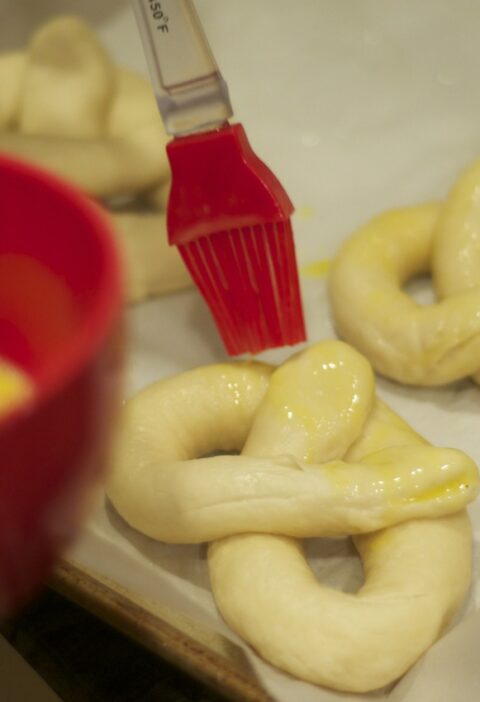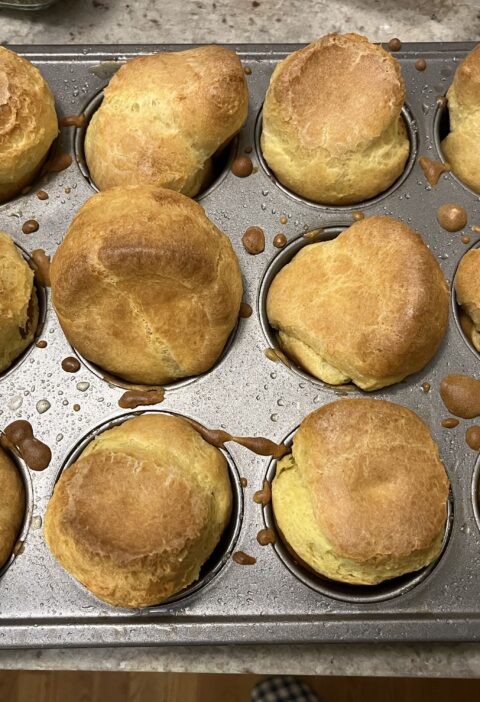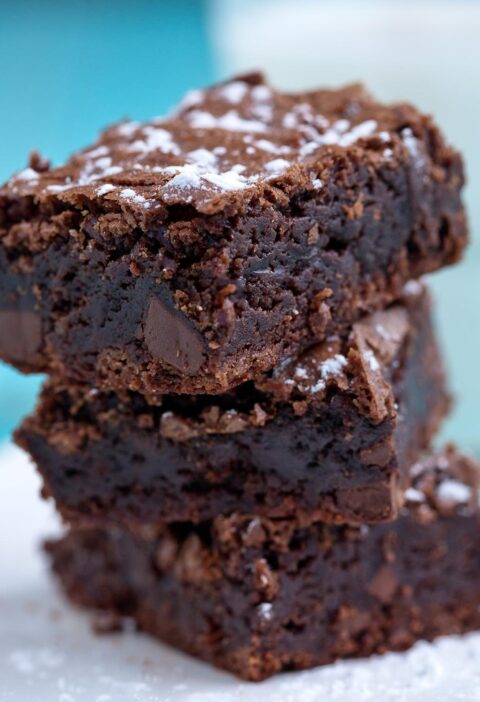Prior to the ingredient breakdown, I think it is necessary to discuss the structure of Chiffon cakes. Since they are considered “high ratio” cakes, they include less fat than other types of cake. Instead, they are reliant on the aerated egg whites for volume in addition to the baking powder present (Miller 2016). Furthermore, they are traditionally baked in Bundt pans, as they are more prone to collapse, due to their single foam structure. Basically, as the cake is removed from the oven, gases from the baking powder reacting with the acidity from the egg yolk (and possibly the Earl Grey) contract, and the starches in the flour may not fully gel when the cake sets (Wilderjans 2013).
It is important for this recipe to keep the wet and dry ingredients separated, as the baking powder–a structure building leavening agent–could react with the egg yolk proteins. Egg yolks gel when pH is reduced and baking powder is basic (Aguilar 2018).
Folding ensures that the incorporation of air as a structural support is even, and the batter is not overmixed. Which, in a typical recipe would promote gluten formation, which is not the optimal desire for a chiffon cake (O’Neill 04_20, 2023).
Gluten free flour is often made from rice, or other non-glutinous grains. As a result, the starches dominate. As starches cook, they absorb water or other liquids, and begin to gel (O’Neill 04_18).
Here, the starches are attracted to the Earl Grey as well as the vegetable oil, which they begin to hydrate in. The sugar and salt further impact the tenderness of the end product, as they both hinder chewiness, and absorb moisture.
The sugar absorbs the water within the egg whites allowing the air bubbles to become trapped within the foam. This enables a stable structure to be incorporated within the batter, and produces a lighter end product.
A metal pan is advised as it promotes better conductivity. When incorporated into liquid, the baking powder reacts, producing CO2. The bubbles from the CO2 cause baked goods to rise. The liquid also produces steam, further contributing to the rise of the cake.
To view a simplified time and activity chart, click here.
To return to the adapted recipe page, click here.


